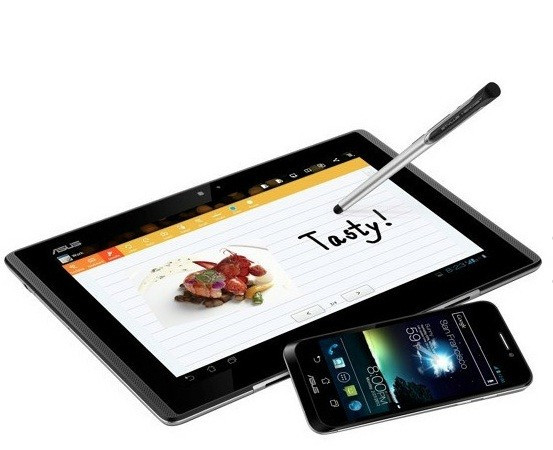Samsung Galaxy S3 Vs ASUS PadFone: Can Most Popular Phone Beat Benchmarked Device?
Samsung Galaxy S3 is ranked as the most popular smartphone based on live searches and sales according to a report by by The Telegraph.

The ASUS PadFone - a three-in-one combination of smartphone, tablet and notebook when teamed with the PadFone Station and PadFone Station Dock - was announced at the Mobile World Congress (MWC) earlier this year. The PadFone comes with the option of a PadFone Stylus Headset, which is a Bluetooth stylus pen that transforms into a headset for picking up calls.
Incidentally, a benchmark test run by Netbooknews showed the PadFone beating the AT&T variant of the HTC One X, Engadget reported.
Check out how the PadFone does against the newly launched Samsung Galaxy S3...
Display
The PadFone features a 4.3in Super AMOLED capacitive touchscreen. The resolution of the display is 540 x 960 pixels with a pixel density of 256 pixels per inch (ppi). The display is protected by scratch-resistant Corning Gorilla Glass with HCLR Film.
The Galaxy S3 features a Super AMOLED capacitive touchscreen protected with Corning Gorilla Glass 2. The display features the TouchWiz User Interface (UI) v4.0 and the resolution of the display is 720 x 1280 pixels with a density of 306 ppi.
Dimension
The PadFone measures 128 x 65.4 x 9.2mm and weighs 129g with the battery while the Galaxy S3 measures 136.6 x 70.6 x 8.6mm and weighs slightly heavier at 133g.
Operating System
Both gadgets run on the Android 4.0 (Ice Cream Sandwich) operating system. The S3, however, has a slightly updated version - Android 4.0.4.
Processor
The PadFone is powered by Qualcomm's Snapdragon S4 8260A dual-core processor, which was clocked at 1.5GHz. The Galaxy S3 is powered by the Exynos 4 quad-core processor, clocked at 1.4GHz. Both devices pack 1GB of RAM.
Camera
ASUS' PadFone sports an eight megapixel rear-facing camera with auto-focus, LED flash and geo-tagging. The smartphone is equipped with a front-facing VGA quality camera.
The Galaxy S3, like the PadFone, is equipped with a main camera of eight megapixels with auto-focus, LED flash and other features such as simultaneous HD video and image recording, geo-tagging, touch-focus, face and smile detection and image stabilisation. The camera can record video in 1080p and 30 fps. The handset packs a secondary camera of 1.9 megapixels, which can record video in 720p at 30 fps
Connectivity
The ASUS PadFone supports WLAN 802.11 b/g/n and Bluetooth version 4.0. It supports data speed up to HSDPA 21Mbps and HSUPA 5.76Mbps.
The Galaxy S3 offers Wi-Fi b/g/n, Wi-Fi HT40, Near Field Communication (NFC) technology and Bluetooth v4.0. It supports data speeds up to HSDPA 21Mbps and HSUPA 5.76 Mbps and can connect to 4G network speeds.
Storage
The PadFone has two models - 16/32GB. Both devices support microSD cards. The S3, like the PadFone, has two models - 16/32GB, with a 64GB model expected as well. The smartphone supports microSD card.
Battery
The ASUS PadFone is powered by a 1520mAh Li-ion battery and delivers talk time up to 10 hours and 40 minutes on 2G and up to eight hours and 30 minutes on 3G networks. The Galaxy S3 has a larger 2100mAh battery and delivers a claimed talk time of up to 21 hour and 40 minutes on 2G and 11 hours and 40 minutes on 3G networks.
© Copyright IBTimes 2025. All rights reserved.





















